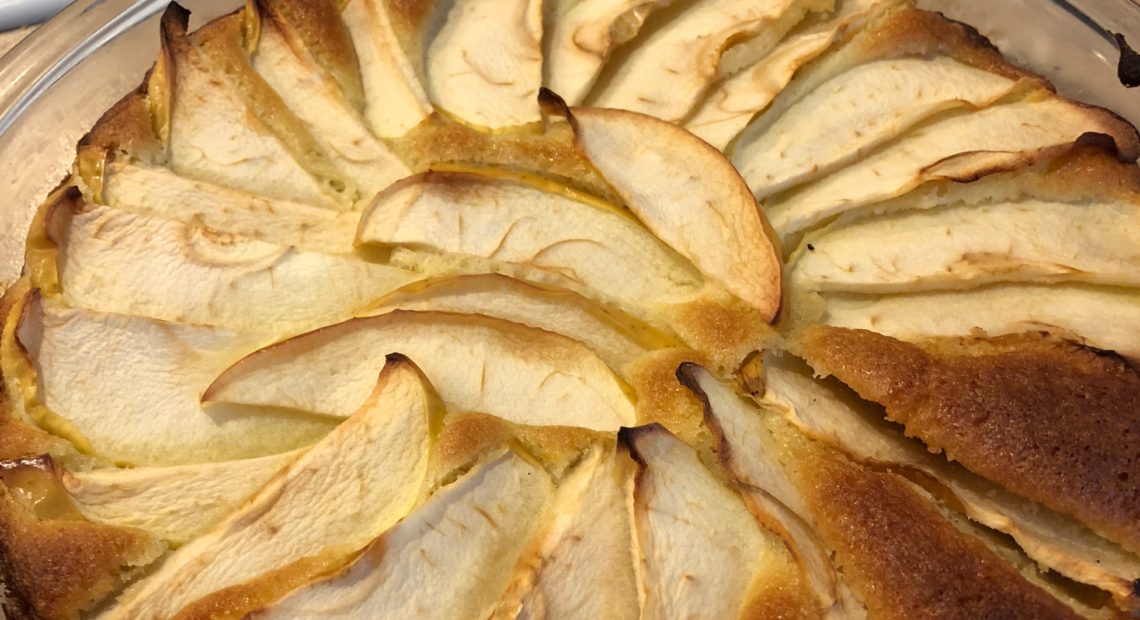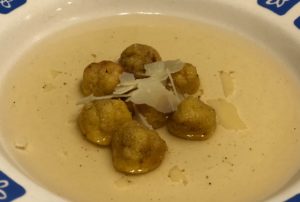
Good Music And Good Food: Cooking With Rossini
Good music and good food, two indulgences that go well together. Composers have been writing music to accompany banquets, dinners and parties for centuries. Think of Telemann’s Tafelmusik (“Table Music” in English), or the Divertimenti Mozart wrote for the wind band hired to play during the emperor’s lunch.
One composer stands out as someone who created both the music and the food. That’s Gioacchino Rossini.
Rossini was perhaps the first celebrity composer. It’s hard to tell fact from legend when it comes to this colorful character, but one thing is clear, he was an enthusiastic gourmet. If you ever encounter a recipe with “alla Rossini” or “à la Rossini” tagged on the end, it could mean Rossini had a hand in making the recipe, it was created for him, or it’s made in a style of which he would approve and uses his favorite ingredients.
Many of those “alla Rossini” recipes were created by one of Rossini’s best friends, Marie-Antoine “Antonin” Carême, who also happened to be one of the first celebrity chefs. Their paths crossed often when Rossini attended the lavish receptions hosted by a mutual patron, Parisian banker James Mayer Rothschild. Even before greeting Monsieur Rothschild, Rossini would swing by the kitchen where he and Carême would trade recipes and chat about the day’s menu. It’s possible that Carême created the famous Tounedos alla Rossini for the composer, including all Rossini’s favorites: truffles, foie gras, butter and cheese. Carême’s protégé, Georges Auguste Escoffier, carried on the tradition in his cookbook, Les Livres des Menus.
Rossini’s birthday was Feb. 29, 1792 (observed, as with most all leap year birthdays, on the 28th). So to honor his birthday, I decided to fire up my playlist of favorite Rossini arias and try a couple recipes, steering clear of recipes that were a bit foreign for my 21st century, American palate. I mean, seriously, ham and chicken mousse? Foie gras? No, thank you.
First was a recipe created by the man himself, Semolina Dumplings alla Rossini, served with a good consommé, or clear soup.

Semolina Dumplings in Chicken Consommé
Semolina Dumplings:
Work 1.5 cup semolina, 2 eggs, salt and a pinch of nutmeg into a dough. Divide the roll into dumplings abou the size of a nut, and fry in butter. Just before serving, add the dumplings to the hot consommé and sprinkle grated Parmigiano-Reggiano on top.
Rossini didn’t give us a recipe for consommé, so I pulled one from Epicurus.
Chicken Consommé:
n medium bowl, whisk together 6 egg whites, 1/2 cup diced onion, 1/2 cup diced carrot, 1/2 cup celery and 1/4 cup tomato until frothy. Mix in 1 pound ground chicken. In medium pot, whisk this mixture into 2 quarts chicken stock. Bring to slow simmer while constantly stirring in one direction with a wooden spoon. Stir for about 15 minutes or until a raft – a fairly solid layer on top of the liquid – begins to form. Reduce to slow simmer and stop stirring. Break a hole in the top of the raft so you can see the consommé. Continue to simmer 45 minutes or until the consommé is crystal clear. Strain through a fine mesh strainer lined with cheesecloth, being careful not to break the raft. Discard raft and return consommé to pot.
Second, I tried a dish created by Carême to celebrate the success of Rossini’s final opera, William Tell. Today, you can find William Tell cake recipes topped with cinnamon, nuts or raisins, but doesn’t a cake for William Tell need an apple on top to match the legend?

Guillaume Tell Cake:
Preheat oven to 425 degrees. Cream 1/3 cup butter with a fork. In a medium bowl, work together 1/2 cup sugar and 2 egg yolks. Fold in creamed butter, 1 cup flour, 2 tsp baking powder and grated rind from 1 lemon. Stir well, then pour into a greased 9-inch pan. Peel, core and thinly slice 1 Golden Delicious apple, and arrange slices on top of the cake. Bake 30 minutes. Dust with confectioners sugar before serving.
You can find more authentic “alla Rossini” recipes in the cookbooks of Carême, Escoffier and Paola Cecchini, one of the leading experts on Rossini’s kitchen and author of In Cucina con Rossini.
Related Stories:

Composers And The Night Sky
With the height of the Perseids on August 11 & 12, it’s a great time to reflect on the inspired music of composers entranced by the celestial objects that surround us. The sky has had a long history of captivating its audience.

Classical Music Venues With Non-Classical Histories: Mount Vernon’s Lincoln Theater
Theaters of the 1920’s were nothing short of magical. Elaborate architecture and stunning decor housed vaudevillian acts and traveling shows for an evening or two, while making way for a rapidly growing hunger in America – a desire for movies. The Lincoln Theater in Mount Vernon was born during this enchanting time of art and growth and today serves as a home to performances and culture in Skagit county.

Quiz: Composer Or Music Software?
Music and technology – two things you probably can’t live without! But can you tell the difference when given just a name? Is Frescobaldi a composer or music software. Or both! Take a couple moments to see if you can guess composer from music software.
















